Fire with FireSweden, Germany, California 2018 - 2021
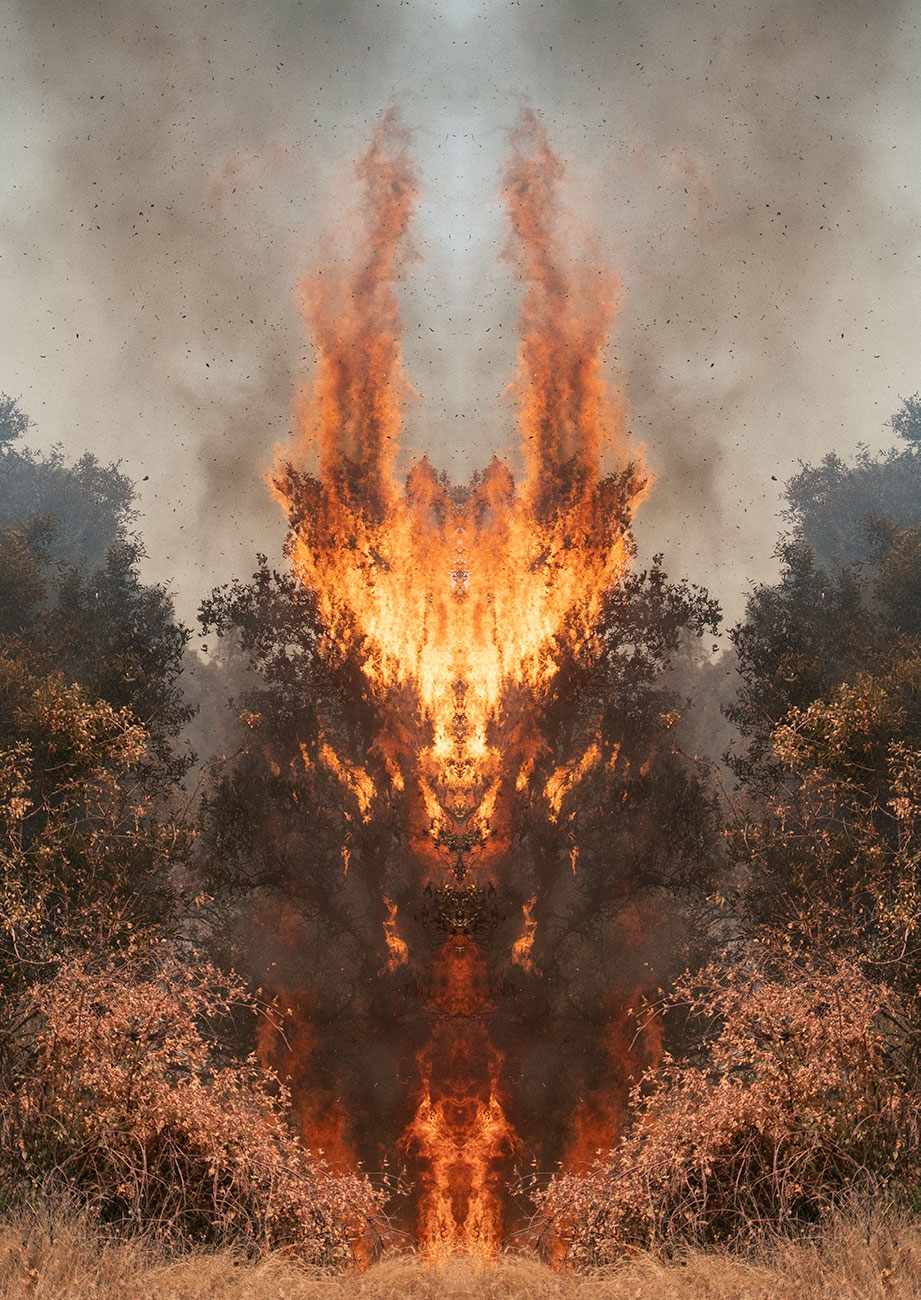
Fire with Fire (Test Apparatus #1), 2020 | archival pigment print on Photo Rag Baryta, 162 x 115 cm
The illusions created the decelerated images in vertical symmetry are reminiscent of the ‘inkblot pictures’ by Swiss psychoanalyst Hermann Rorschach, originally introduced as a projective psychological tool. Indeed, the symmetric patterns induce subconscious observations: new figures gradually emerge from the flames: some viewers see mythical creatures, others see fiery spirits or forest demons. The various sculptures are inspired by ‘eternal flames’ emblematic of historical monuments and memorials. They function as models of constructed sites of collective memory worldwide. The original bronze or stone sculptures are duplicated in fired ceramics; the blazing flames are transformed into flickering LEDs. The work series was first presented in Julius von Bismarck’s solo exhibition “Feuer mit Feuer” at Bundeskunsthalle Bonn, 2020.
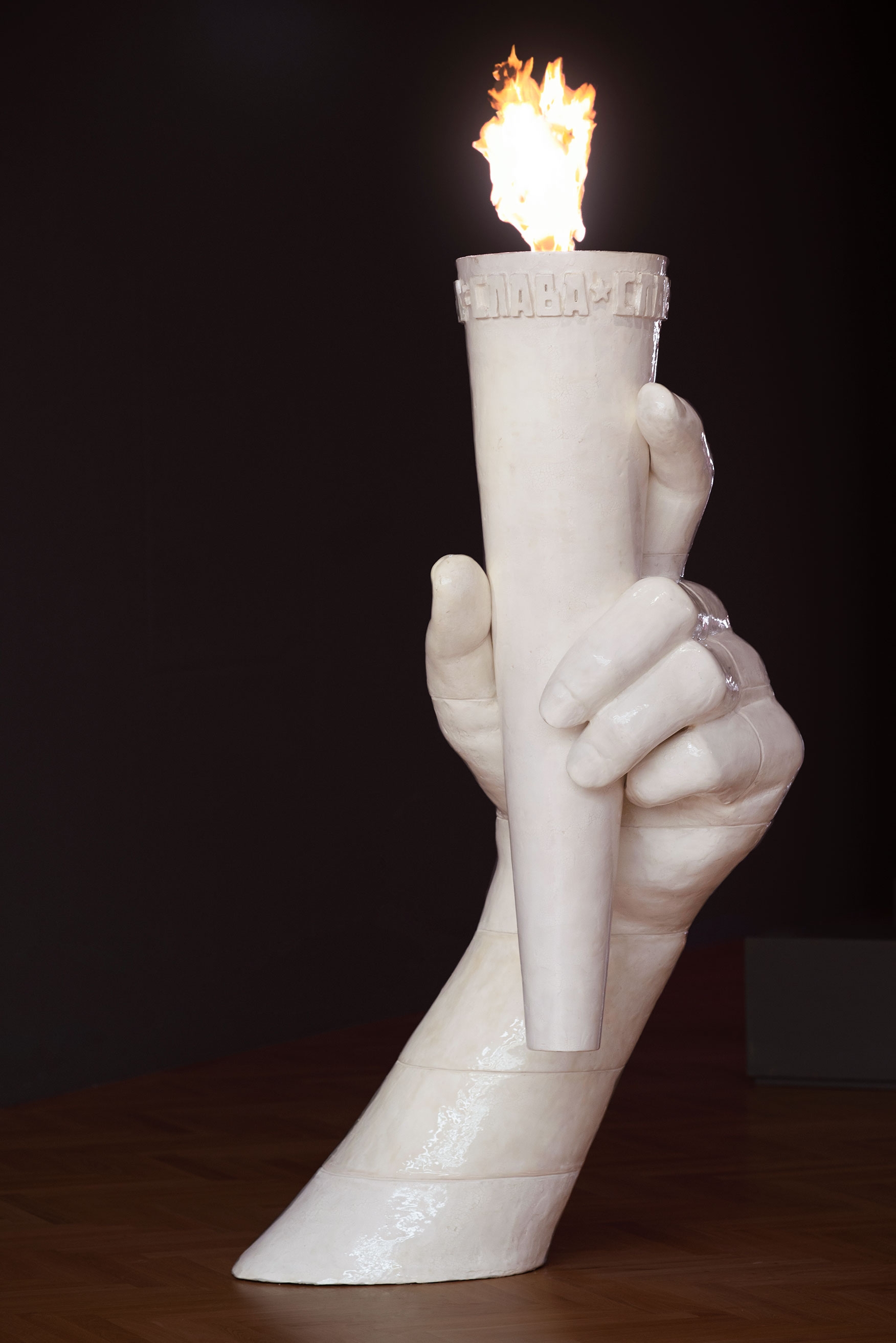
Glory*Glory*Glory, 2020 | rotating LED display, 215 x 108 x 64 cm
Abstract from: Damion Searls, Seeing Fire, exh. cat. Bundeskunsthalle Bonn, 2020
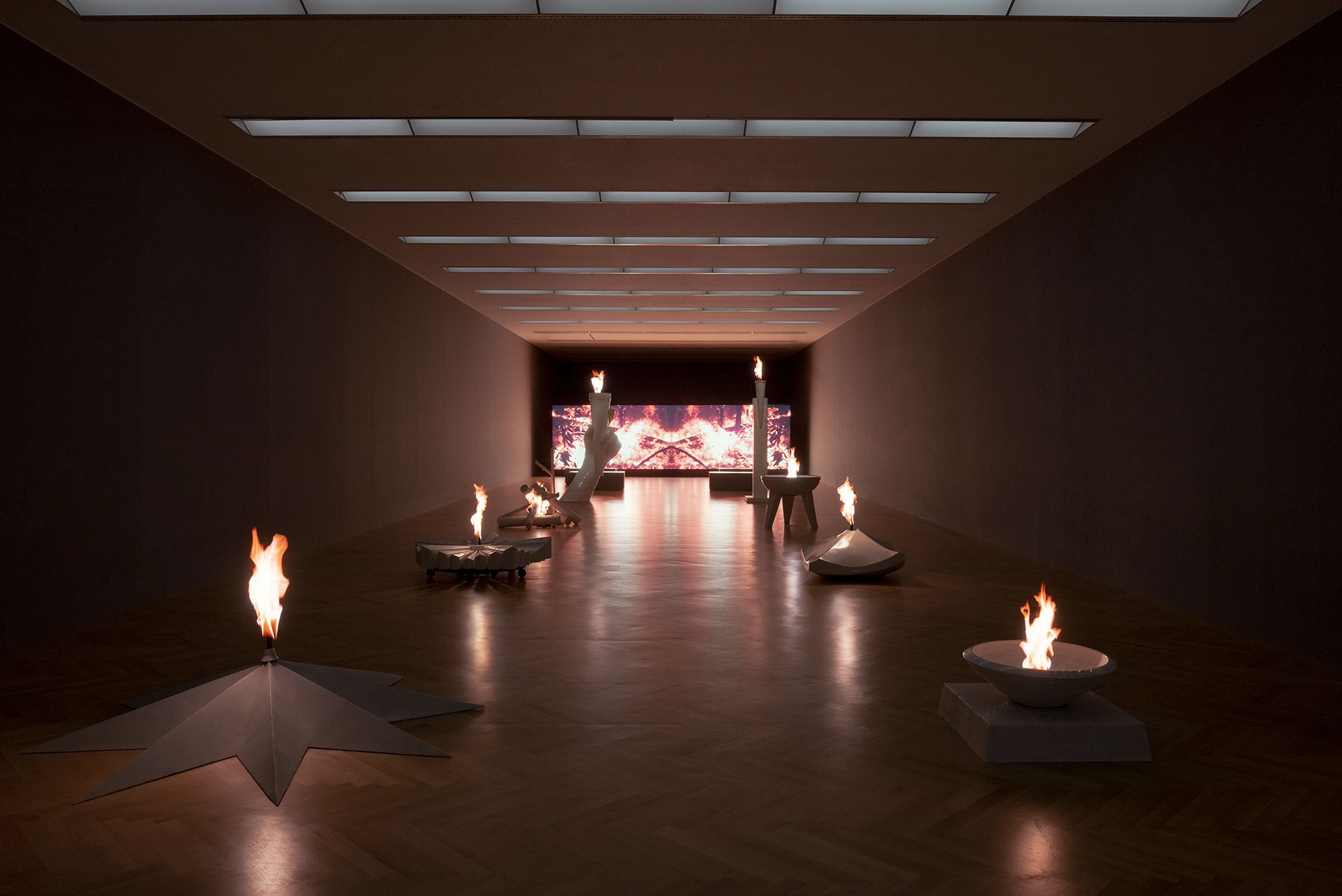
Installation view ‘Feuer mit Feuer’, Bundeskunsthalle Bonn, 2020
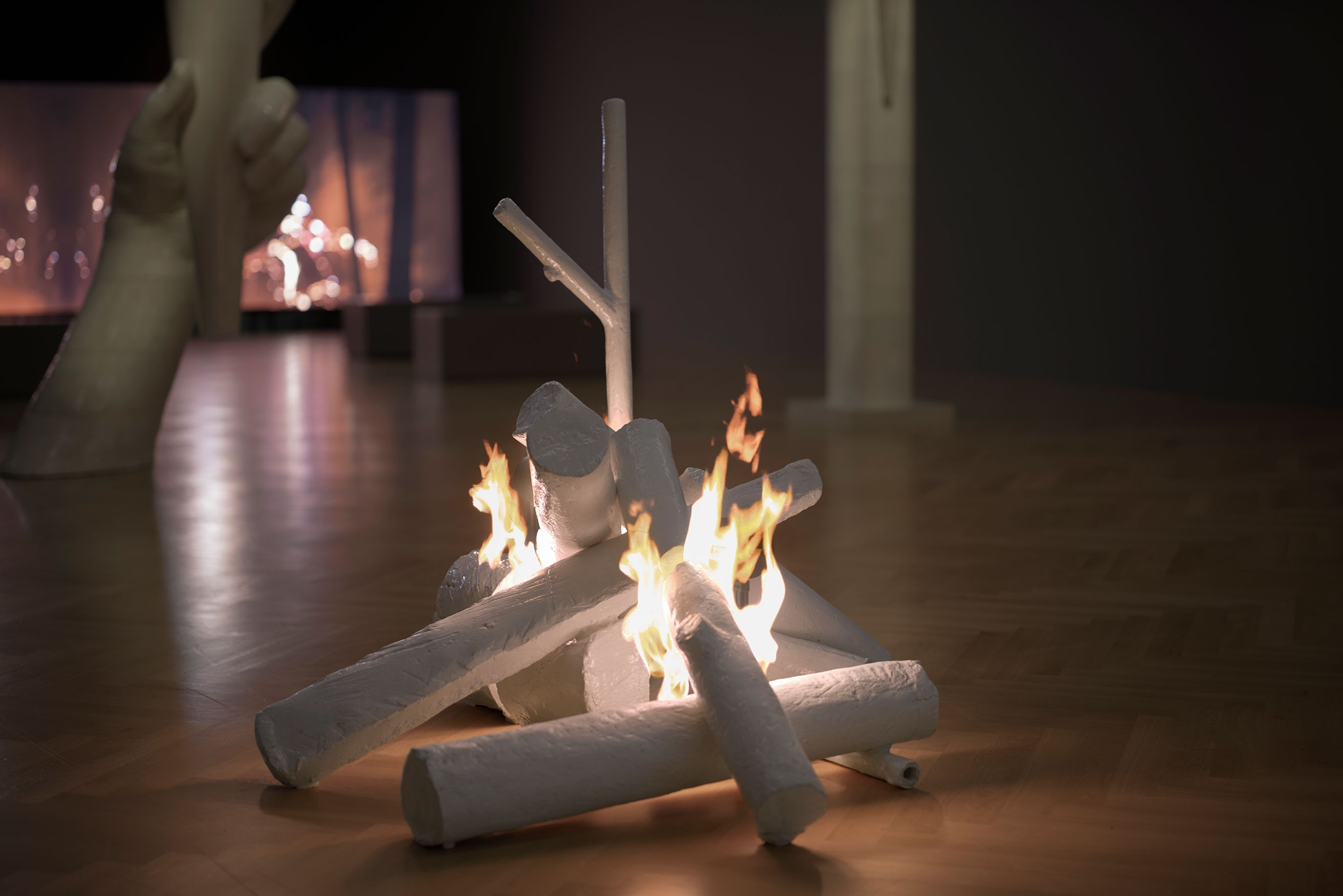
Installation view ‘Feuer mit Feuer’, Bundeskunsthalle Bonn, 2020 Partisan Glade, 2020 | glazed ceramic, rotating LED display
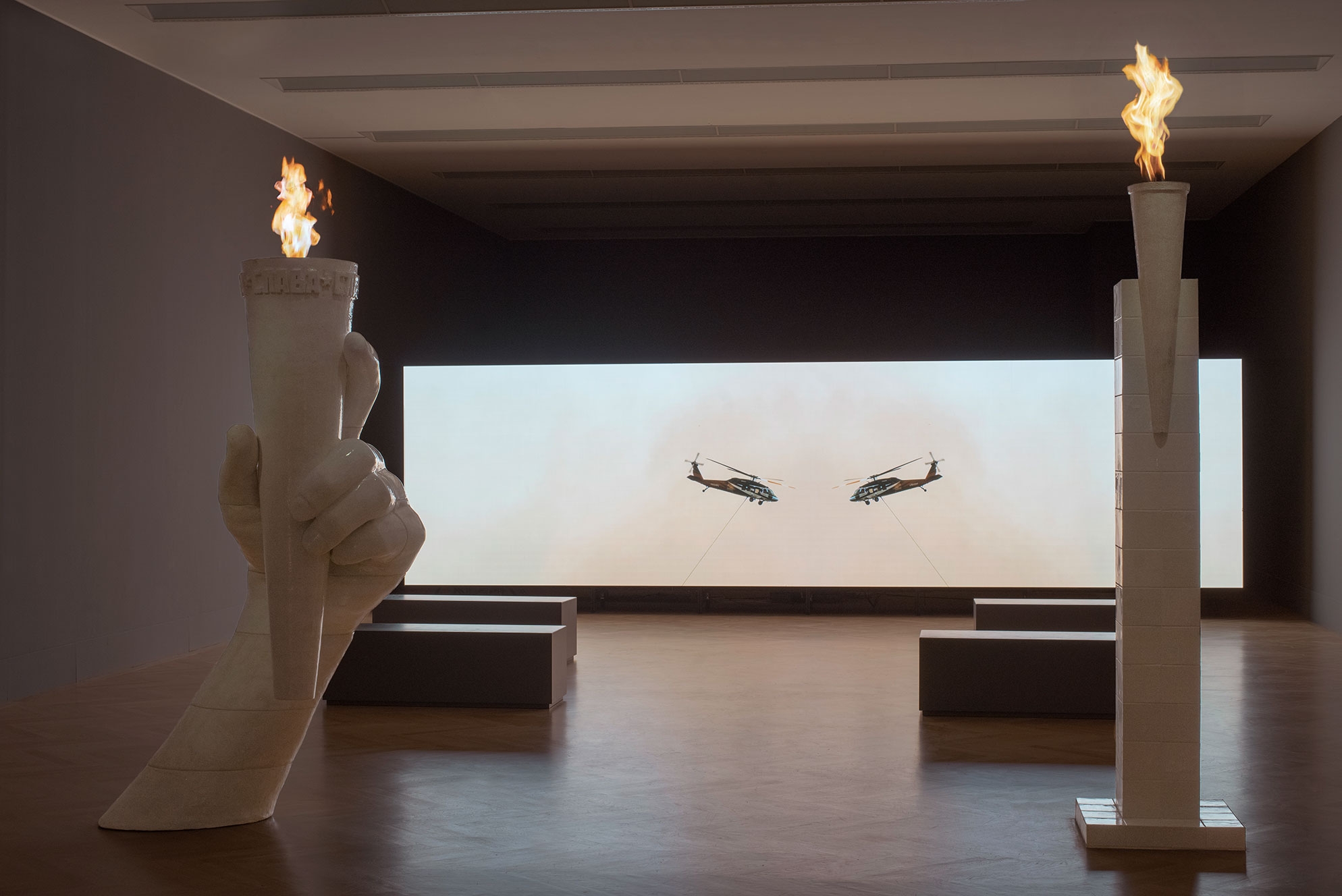
Installation view ‘Feuer mit Feuer’, Bundeskunsthalle Bonn, 2020

Eternitate , 2020 | glazed ceramic, rotating LED display
“[The Fire with Fire] videos are not like a Rorschach-Test. Rorschach knew, though he didn’t make his reasons explicit, that a test blot had to be on a medium-sized card you could hold in your hand. Images do different things to you up close or from a distance, vertically or horizontally, big or small. As you watch the videos, there is no examiner or doctor asking you: “What might this be?”, and writing your answers down. There is nothing coming from you at all – nothing for anyone to measure, code and analyze. The videos ask nothing of us, except whatever it is that art asks. To borrow Rorschach’s distinction, art is an exercise of the imagination but it also, ideally, creates new ways of seeing. Given von Bismarck’s subject, that feels right. Using the raging wildfires of our new era to create aesthetic objects that prompt us to daydream would risk being simply self-indulgent. Creating a way to perceive these fires anew feels necessary.”
Abstract from: Damion Searls, Seeing Fire, exh. cat. Bundeskunsthalle Bonn, 2020


Fire with Fire, Sweden, Germany, California 2018 - 2021
Fire with Fire (Test Apparatus #6), 2021 | archival pigment print on Photo Rag Baryta, ceramic tile frame, 140 x 220 cm
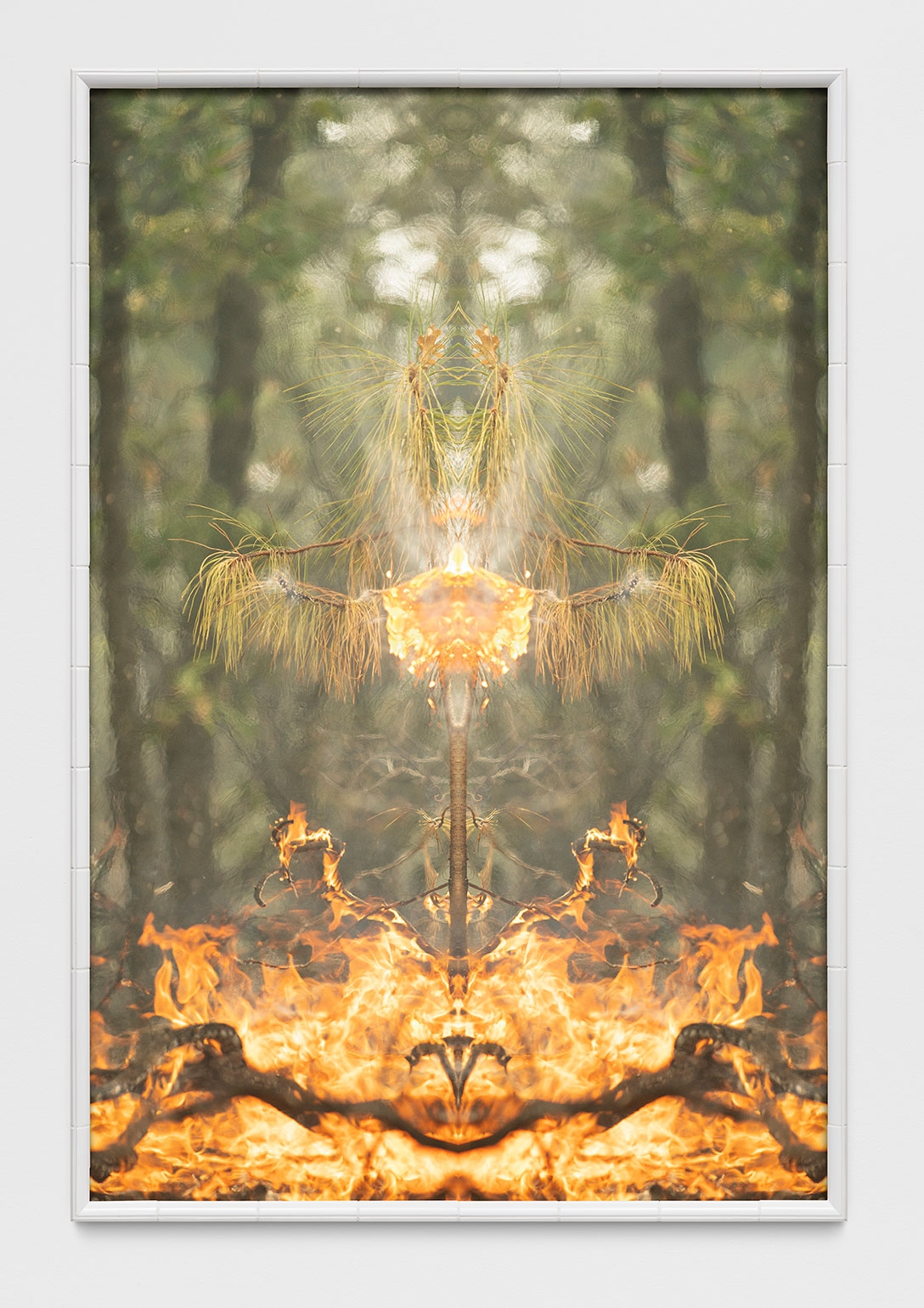
Fire with Fire (Test Apparatus #5), 2020 | archival pigment print on Photo Rag Baryta, ceramic tile frame, 135 x 90 cm
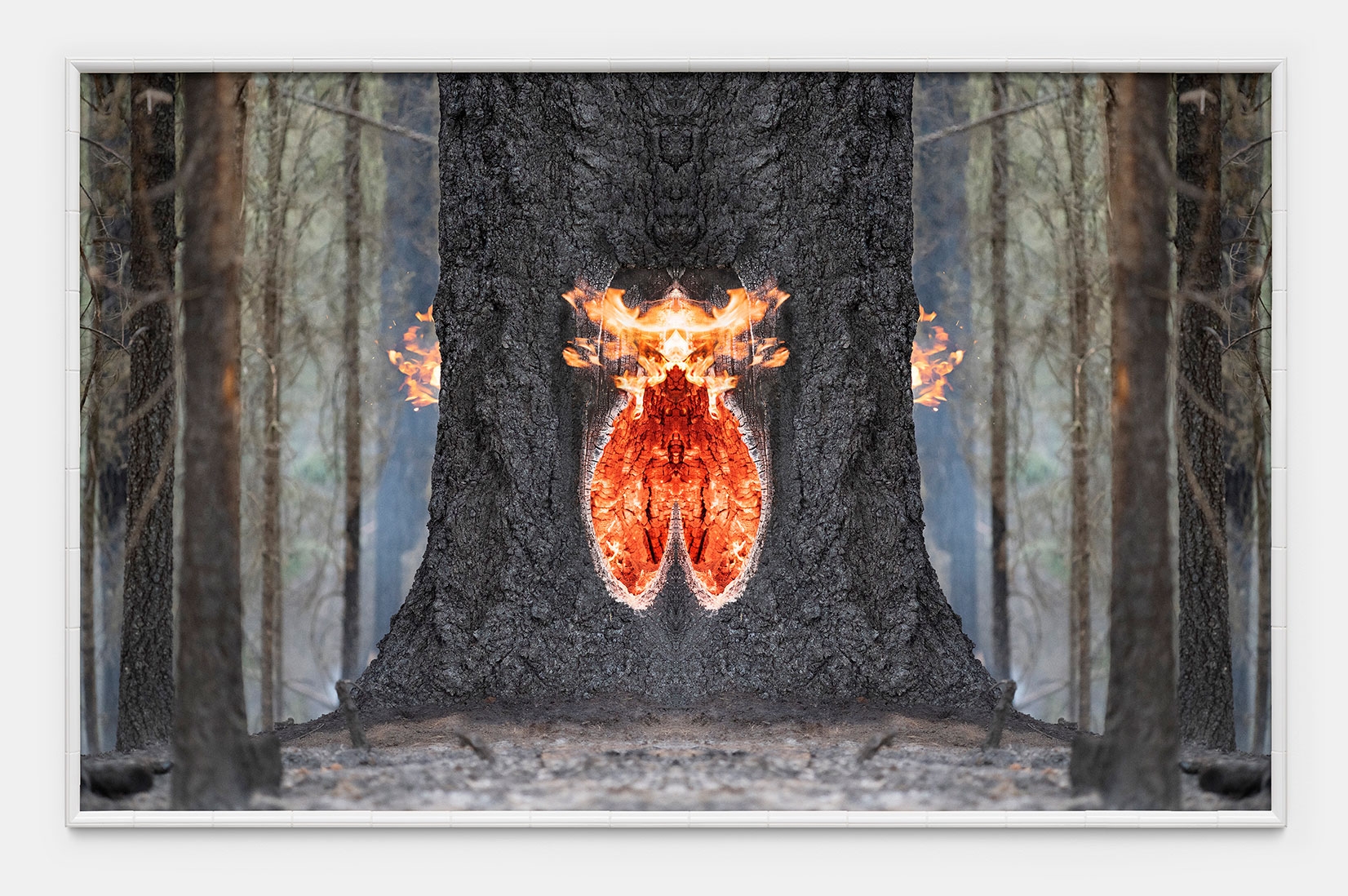
Fire with Fire (Test Apparatus #3), 2020 | archival pigment print on Photo Rag Baryta, ceramic tile frame, 177 x 114 cm

Installation view, alexander levy, Berlin | Fire with Fire (Test Apparatus #3), 2020